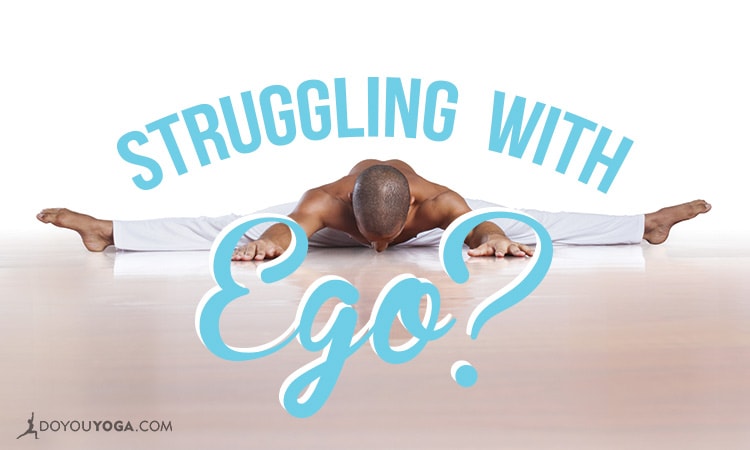Teaching yoga is such an incredible job and one that comes with both accolades and criticism. For the most part, accolades are the dominant of the two forms of feedback, and learning to not attach ourselves too strongly to that feedback is an important part of taming your ego and staying grounded.
How Ego Leads to Suffering
Hearing positive feedback can make it easy to transition to what yoga philosophy calls asmita, or a place of ‘I-am-ness.’ Thoughts like “I am an amazing teacher” or “I have a strong, beautiful, or advanced practice” can form from an influx of positive feedback, which can lead us down the path of ego.
Dwelling in a place of ego is a very isolating space to exist. An overdeveloped ego can draw us away from our connection with the world and the people around us. We begin to hold ourselves in a different light than those we are teaching and trying to help with yoga.
We see ourselves as being an individual, and our students as being a separate group of people, which can and often leads to dukkha, or suffering. Being more fully connected with our students and our colleagues is a much more authentic and heart-centered way to move through the world.
Non-Attachment to Positive Feedback
Just as we remind new yoga teachers not to dwell in a place of self-judgment as they begin teaching and inevitably make small mistakes, we should likewise learn not to dwell in a place of ego.
Feedback comes in and we thank the giver, examine the statement for any lessons that can be gleaned, and then let that statement go. Acknowledging our strengths is a positive practice, but these statements and feelings should be released as soon as we’ve learned from them.
Yoga teaches us to learn not to attach to things; non-attachment to feedback is a great place to start as a teacher. ~Emily Loupe
I like to use a practice of imagining a container in which I place the feedback. The container can be anything you would like: a glass jar, a box, a trunk, or some other special place you want to use.
When I get a piece of feedback, I mentally examine it and see if there is any kind of lesson I can pull from it. Then it gets placed into the container with all of the other feedback and the lid gets shut tightly. I do this with both positive and negative feedback.
We Just Are
Just as we often teach our students in a meditation practice that they are not this moment, they are not this thought, that they are not this pain or this suffering, we should also remind ourselves as teachers: we are not amazing, incredible, the best, nor are we bad. We just are.


